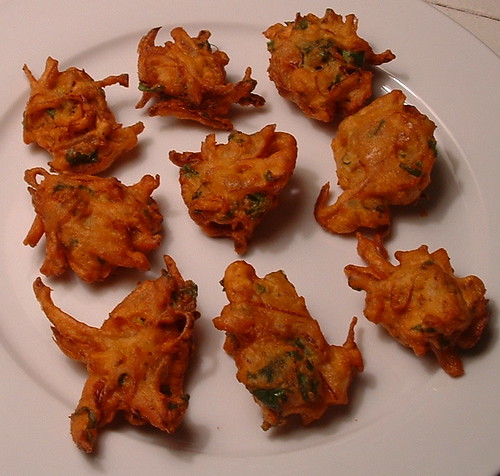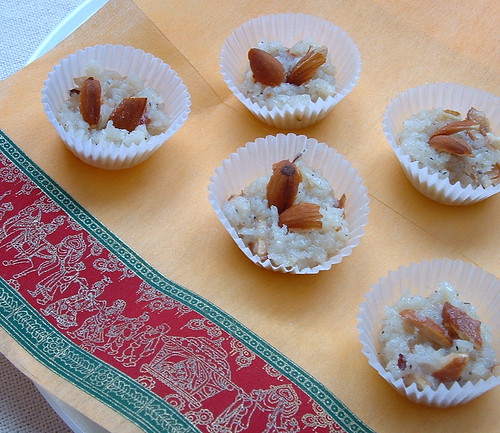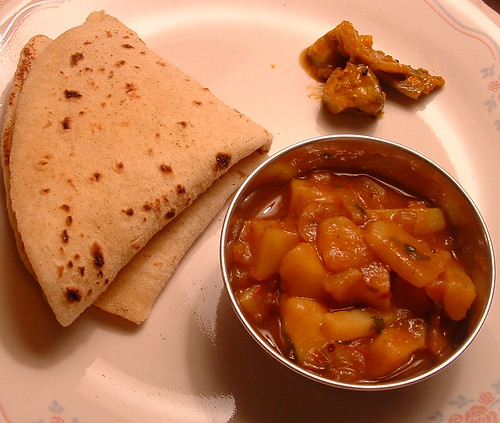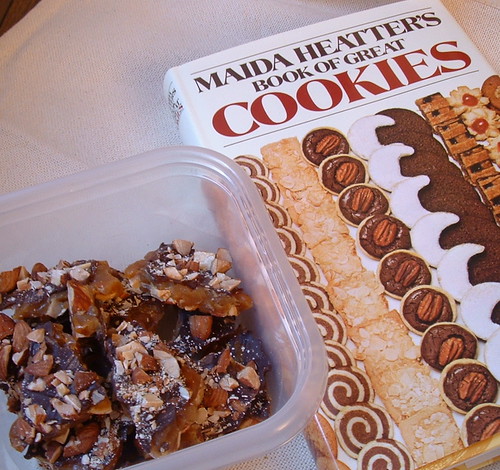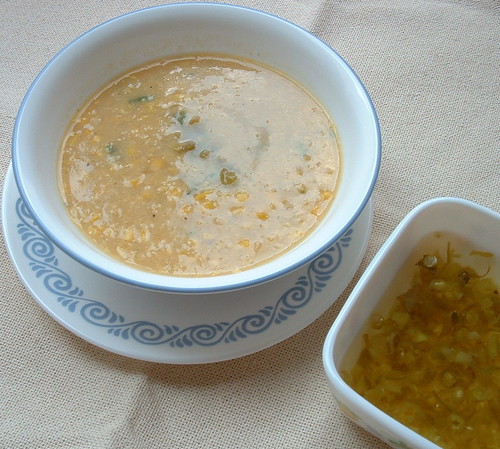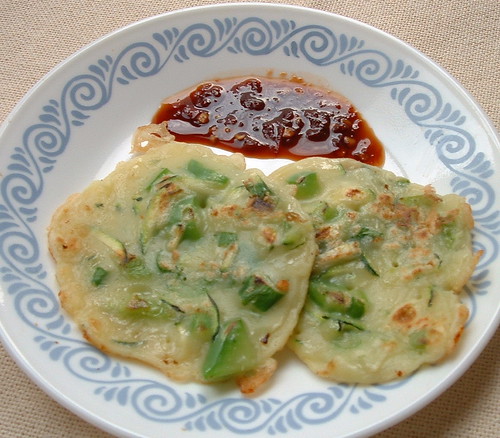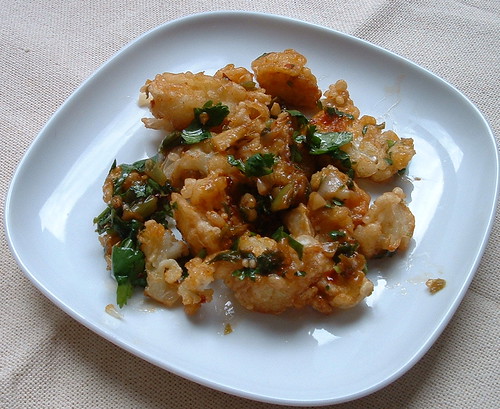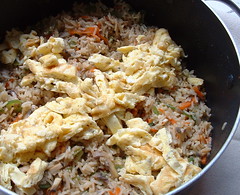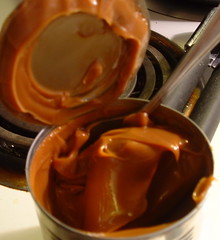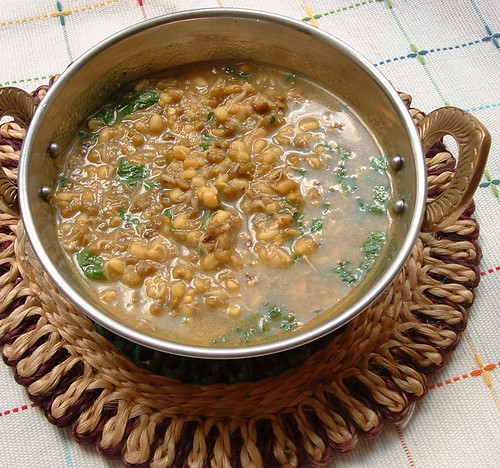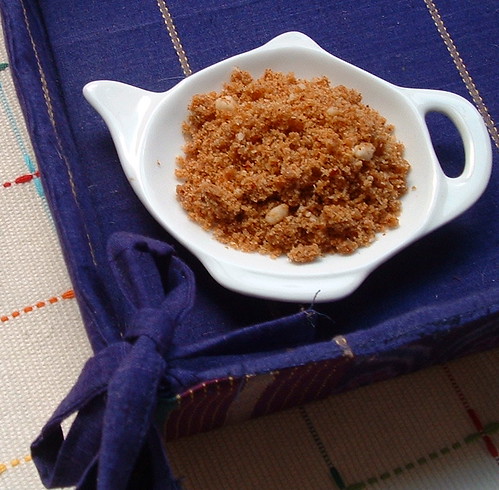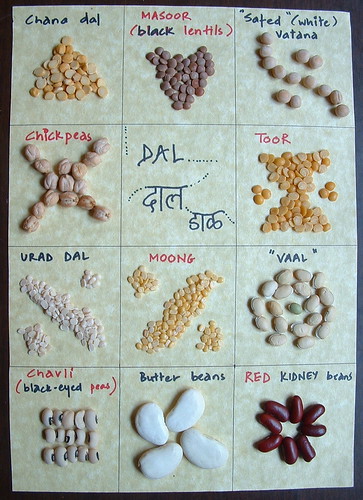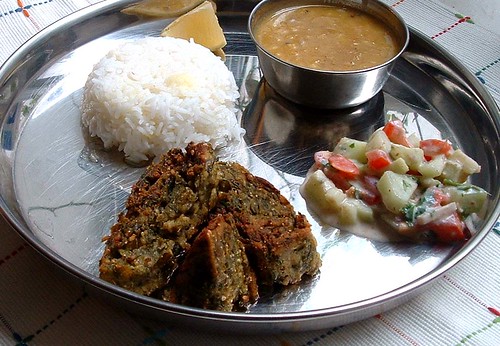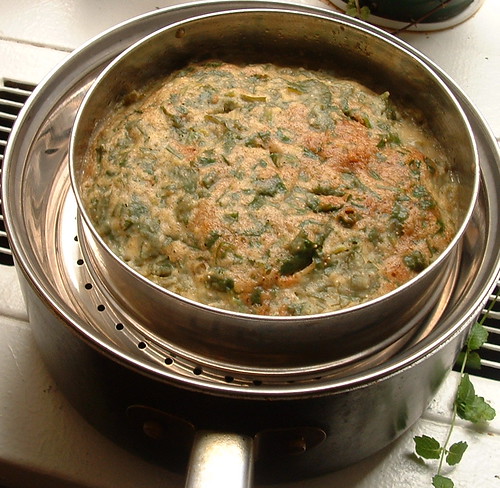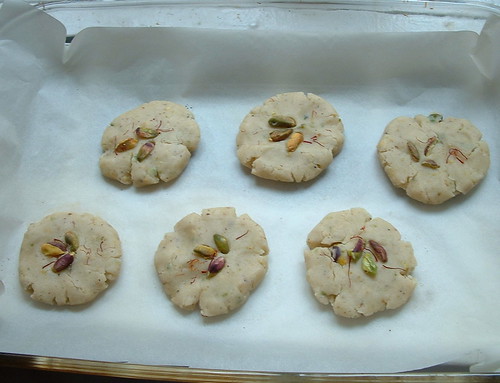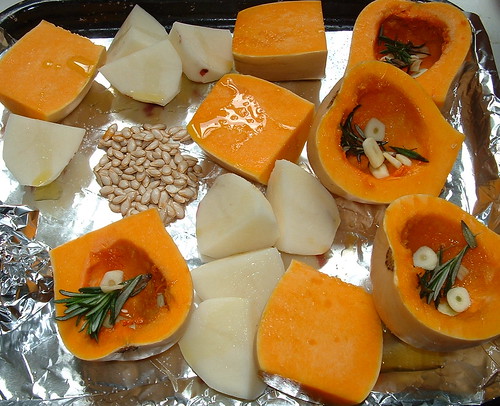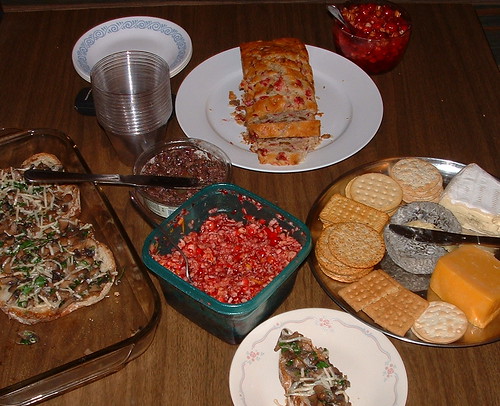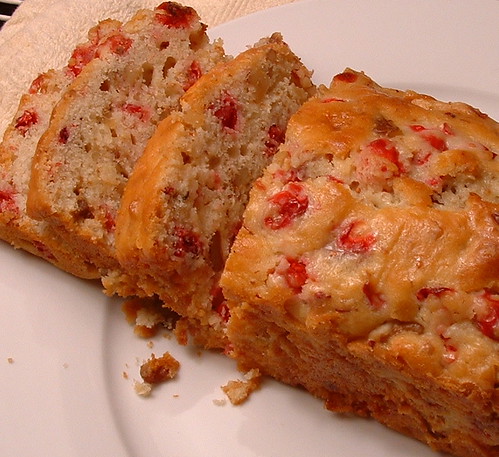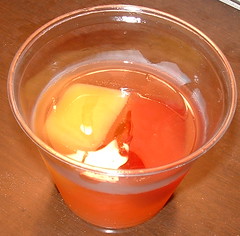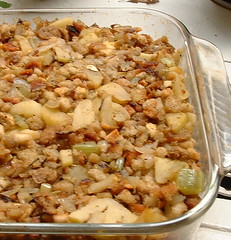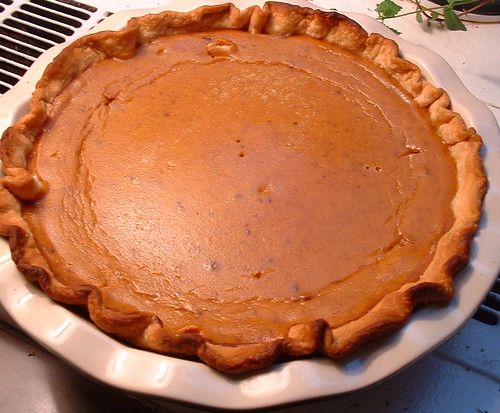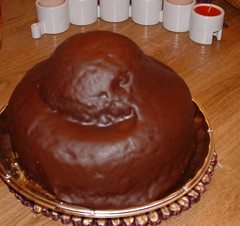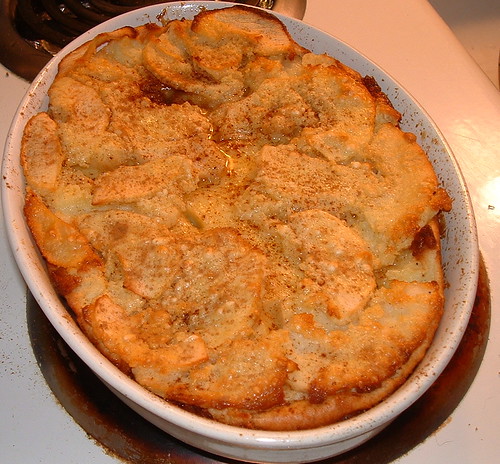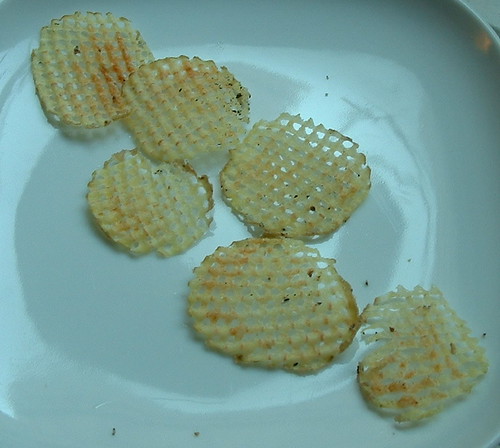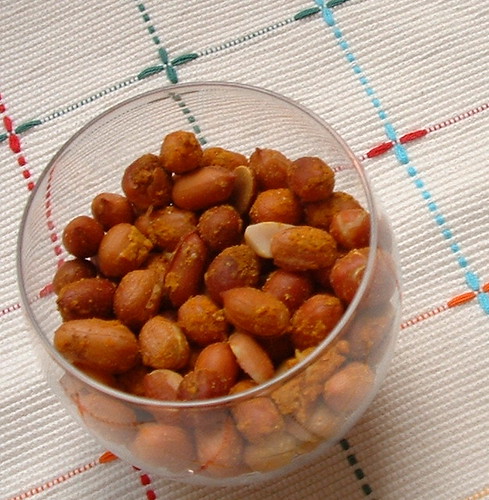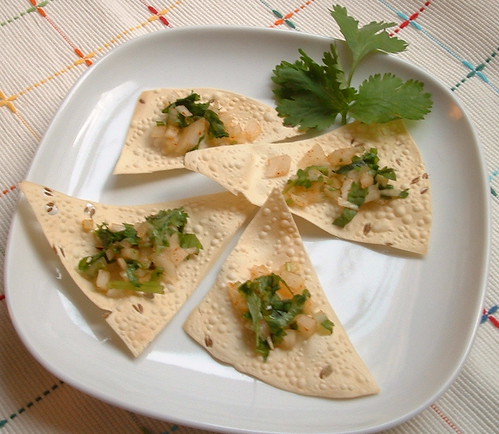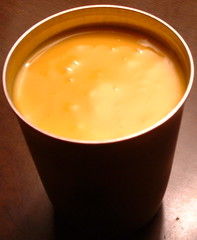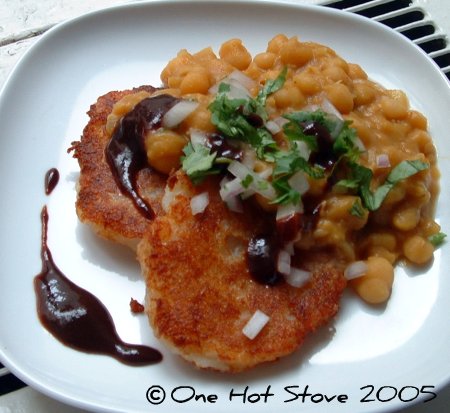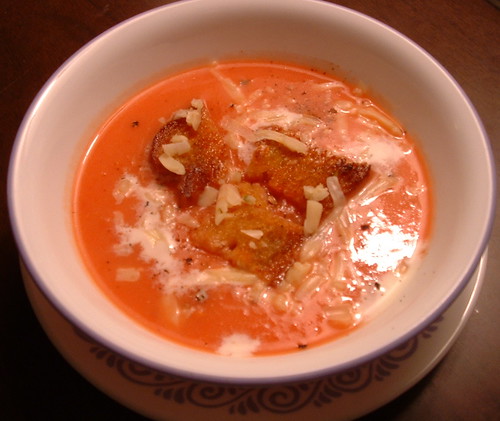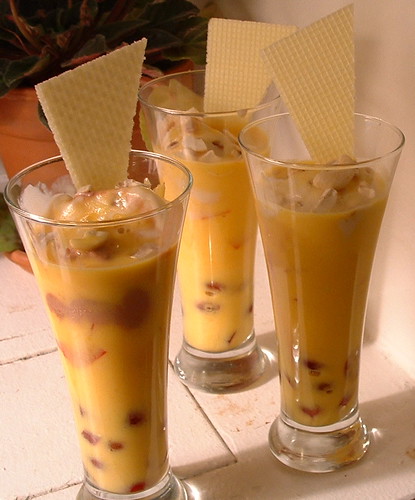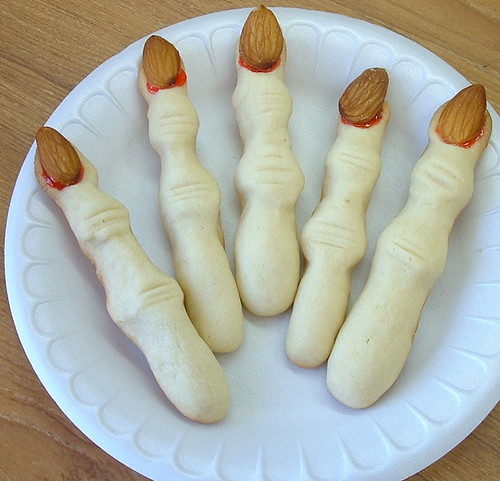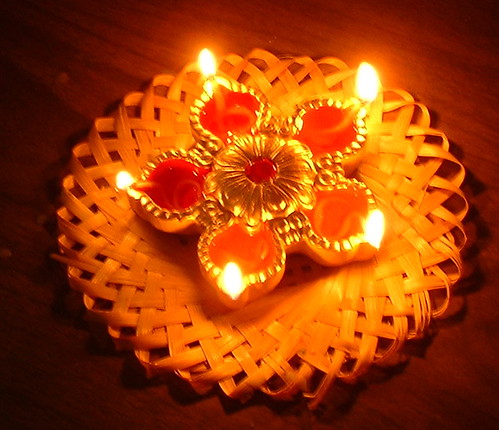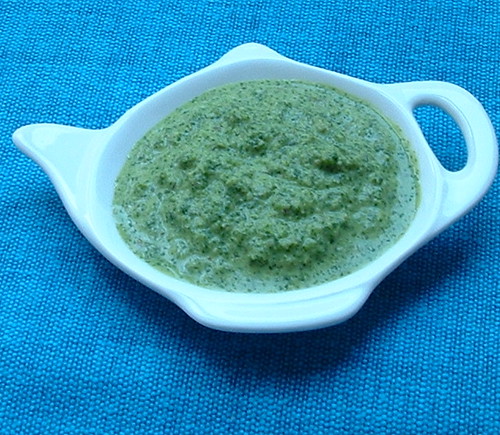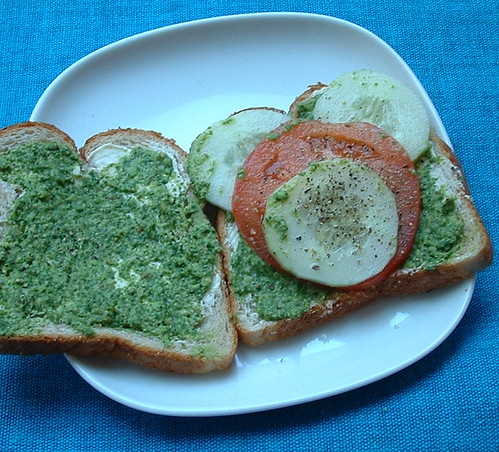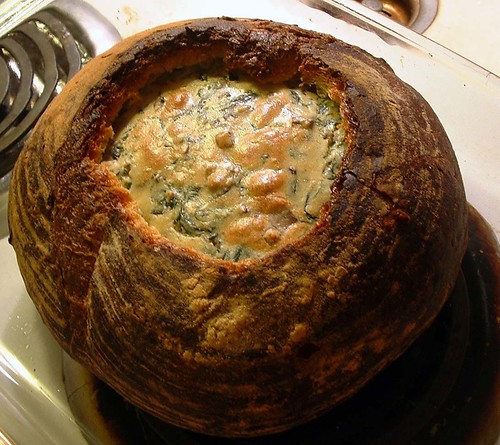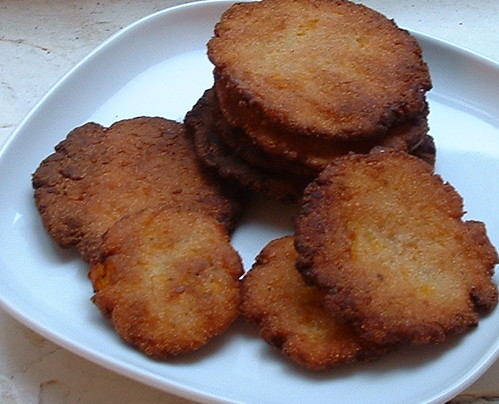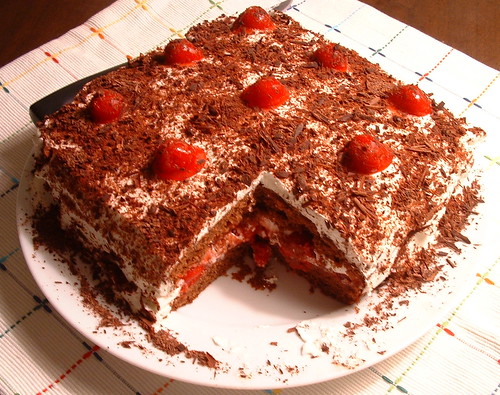The idlis themselves are steamed dumplings made from a fermented rice-lentil batter. They are served with sambar, a tasty spicy dal that I add lots of fresh veggies to. There are other reasons why this dish is a favorite for me: the idlis can be made ahead of time and refrigerated or frozen. They reheat *beautifully* in the microwave and taste as good as new! The sambar can also be made ahead of time, making this an ideal brunch dish.
In fact, I had planned a New Years brunch for some of our friends today...with an international brunch menu including idli-sambar (India), huevos rancheros (Mexico), spinch-mushroom quiche (France?) and brownies (America). But the knee injury left me in so much pain, unable to stand for long, that I had to cancel the brunch :( Maybe next time...
For making idlis, you do need some special equipment in the form of idli molds, pictured here beautifully by Shammi. Of course, in a pinch, any greased vessel will do.
Idli-Sambar
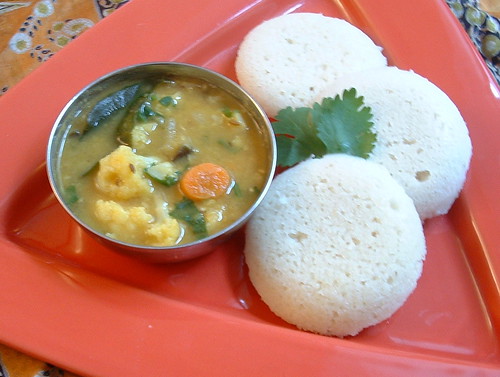
(The pretty red serving dish was a thoughtful holiday gift from my lovely friend L!)
For the Idlis
Ingredients
1 cup urad dal
2 cups idli rava (coarsely ground rice)
salt to taste
Non-stick spray (such as "Pam") for greasing molds
Method:
1. Soak urad dal overnight in warm water. Grind it to a fine paste.
2. Soak idli rava for 30 minutes in warm water.
3. Mix the soaked idli rava and ground urad dal in a bowl, cover and leave overnight to ferment.
4. Once the batter is doubled in volume, use it right away or place it in the refrigerator until needed.
5. To make idlis, spray the molds with non-stick spray (or brush with oil). Add salt to the idli batter, mix lightly and scoop into the molds (half-full).
6. Steam for 10-15 minutes till a knife inserted into the idli comes clean.
Sambar
Ingredients
1 cup toor dal (split yellow peas), cooked
2 tbsp oil
1 tsp cumin seeds
1 tsp mustard seeds
5-6 fresh curry leaves
pinch of asafoetida
1/2 small onion, minced
2 cups mixed diced veggies of your choice (I used eggplant, peas, carrot, cauliflower)
1 tsp tamarind paste
1 tbsp sambar powder (available in stores)
2 tbsp cilantro, minced
Method:
1. Make a "tadka" by heating oil and adding cumin seeds, mustard seeds, curry leaves and asafoetida.
2. Add onion, turmeric, salt, chilli powder and saute for a minute.
3. Add veggies and saute for a minute.
4. Add enough water to cover the veggies, tamarind paste, sambar powder and let the veggies simmer till just tender (5-7 minutes).
5. Add cooked dal, bring to a boil and simmer for 5 minutes.
6. Garnish with cilantro.
Here's to a wonderful new year 2006. My wish: a wholesome meal in every home on this planet and enough food and love for all!

